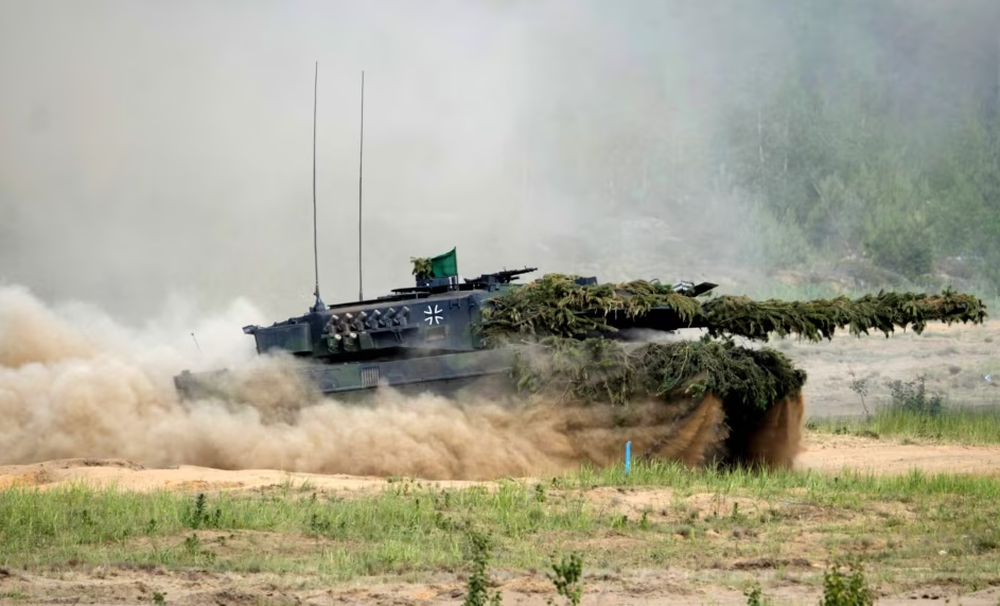
Leaders of the North Atlantic Treaty Organization (NATO) member countries are expected to agree on a new, ambitious defense spending target at an alliance summit in The Hague on Wednesday.
The request for increased spending comes from US President Donald Trump.
What are NATO leaders expected to approve?
They are expected to agree that NATO member countries will spend 5 percent of their gross domestic product – on defense and on defense and security-related investments.
This is a significant increase compared to the current target of 2 percent, which was approved at the alliance summit in Wales in 2014. But the new target will be measured differently.
NATO member countries are expected to spend 3.5 percent of their gross domestic product on defense, including weapons and troops. The remaining 1.5 percent focuses on security-related investments – such as adapting roads, bridges and ports for military equipment, cybersecurity and protecting energy pipelines.
Speaking on Wednesday, NATO Secretary General Mark Rutte said that countries "must find the money."
"It's not easy, these are political decisions, I fully understand that," he stressed, adding that, given the threats from Russia and the international security situation, "there is absolutely no other alternative."
"We really need to do this," he said.
How challenging will the new objective be for NATO countries?
Extraordinary for most of them.
There are 22 countries in the 32-member alliance that spent 2 percent of gross domestic product or more on defense last year.
Overall, member countries spent 2.61 percent of NATO's gross domestic product on defense last year, according to the alliance's estimates. However, this figure changes when analyzing individual countries.
For example, Poland spends more than 4 percent of its gross domestic product on defense, ranking it first in this regard. At the bottom of the list is Spain with 1.3 percent.
When are NATO countries expected to reach the target?
In 2035. The target may be changed after a review planned for 2029.
How much more cash are we talking about?
It is difficult to be precise with numbers, because everything will depend on how large these economies will be in the future.
Also, NATO does not currently measure spending in the category of defense and security sector investments – so there is no baseline for comparison.
But NATO countries are set to spend over $1.3 trillion on defense in 2024, compared to nearly $1 trillion in 2021 prices. If all NATO countries spent 3.5 percent of their gross domestic product on defense last year, the figure would rise to $1.75 trillion.
This means that achieving the target could mean hundreds of billions of dollars more per year, compared to current spending.
Why are costs increasing now?
Russia's war in Ukraine, concerns about a potential future threat from Russia, and American pressure have pushed European capitals to increase defense spending and plan even greater increases in the future.
"Russia could be ready to use military force against NATO within five years," Rutte said earlier this month.
Europe is also preparing for the possibility that under President Trump, the United States will withdraw some military troops from Europe.
"America cannot be in every country all the time, nor should it be," US Secretary of Defense Pete Hegseth said earlier this year.
How will the additional funds be spent?
NATO agreed this month on new military capabilities – the troops, military units, weapons, and equipment that NATO believes each country should have to defend itself and the alliance.
These targets are confidential, but Rutte said the countries agreed that more investment should be made in "air defense, fighter jets, tanks, drones, personnel and logistics."
Are they all in agreement?
No. Spanish Prime Minister Pedro Sanchez has said that his country can meet its military objectives by spending just 2.1 percent of its gross domestic product.
His government has approved a draft declaration stating that it does not intend to spend more.
Some analysts have said that there are countries that have expressed their willingness to increase spending, even though they will not have the capacity.
Comparison between NATO's objective and other countries in defense
NATO allies allocate a much smaller share of their economy to defense than Russia, but together, they spend far more than Moscow.
Russia's military spending has increased by 38 percent in 2024, reaching 149 billion or 7.1 percent of gross domestic product, according to the Stockholm International Peace Research Institute (SIPRI).
China, the world's second-largest military spender, is estimated to have allocated 1.7 percent of its gross domestic product to this end, according to SIPRI.
How do defense spending differ from government spending?
In NATO member countries, defense occupies a small space in state budgets.
Military spending accounted for 3.2 percent of government spending in Italy, 3.6 percent in France and 8.5 percent in Poland in 2023, according to SIPRI data.
In Russia, that year, military spending accounted for 19 percent of government spending./ REL (A2 Televizion)











